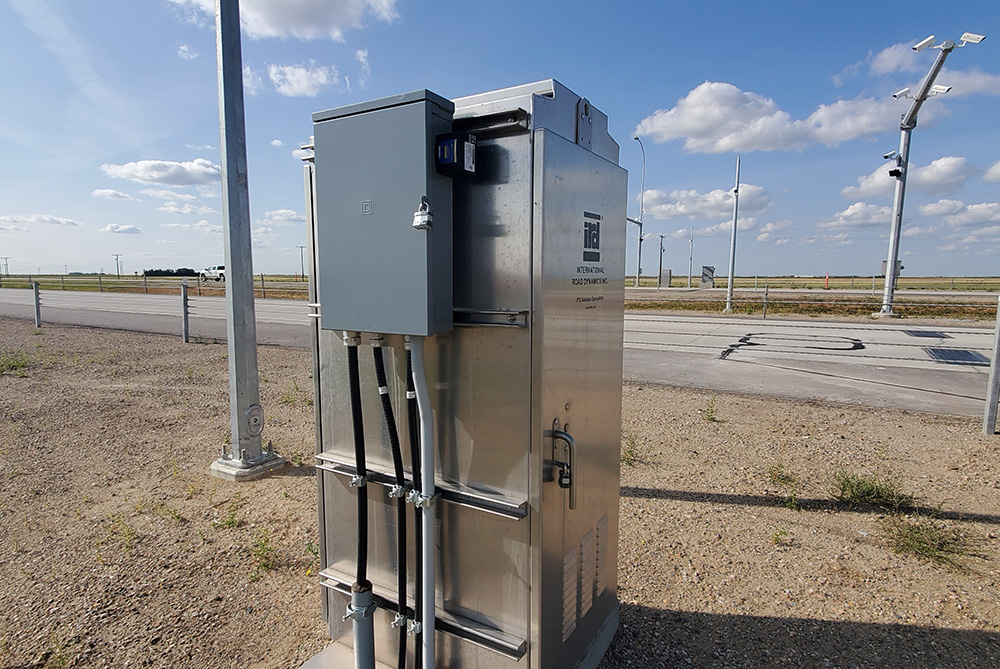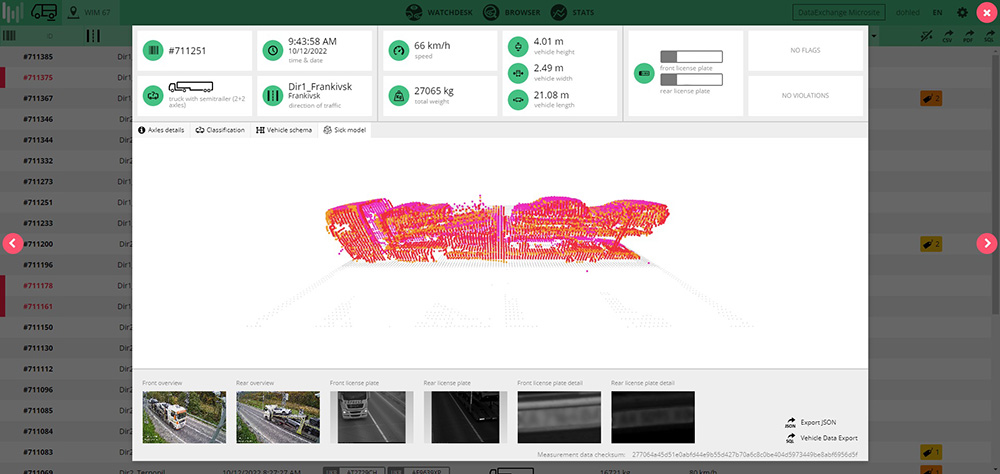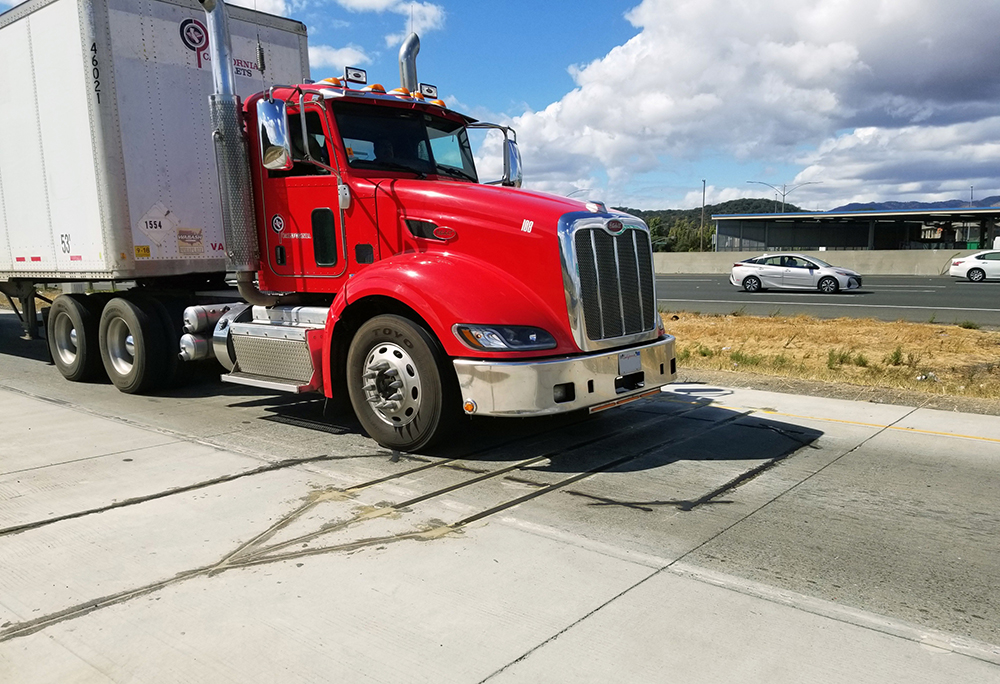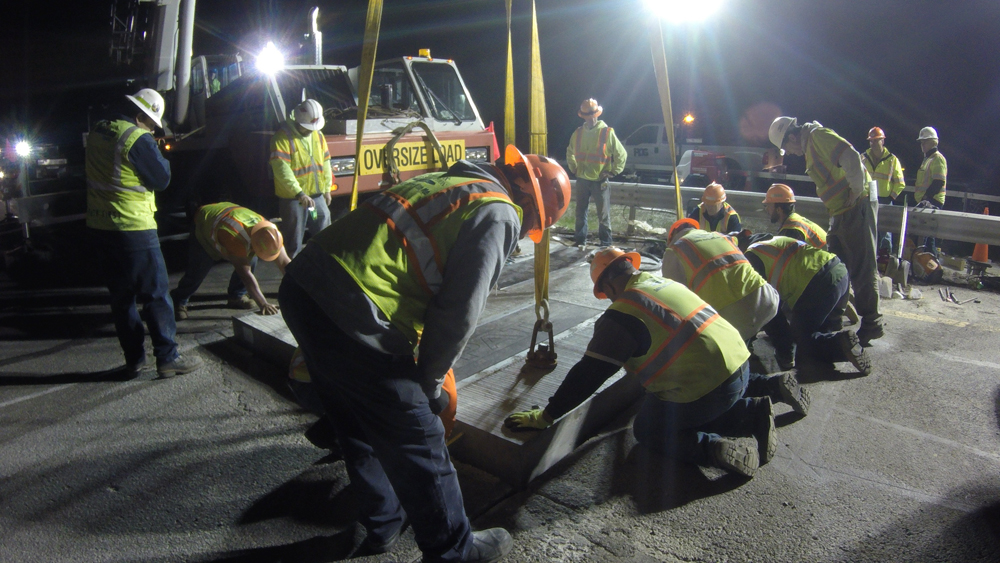
Many cities round the world are now restricting – or seeking to restrict – heavy goods vehicles altogether or only allowing them at certain times. Weigh in Motion (WiM) technology exists to enforce restrictions on trucks – so does this provide opportunities for WiM providers? Possibly, although maybe not in the ways you might expect.
For instance, Christoph Klauser, business development manager traffic solutions at Kistler, sees increased interest in some regions to use WiM to cut vehicle access into cities, but warns: “This interest rarely converts into installed WiM sites.” Tighter budgets, and alternative enforcement methods – such as ANPR/ALPR – explain this, he says. Also, if access restriction is dependent on vehicle class rather than weight, WiM systems won’t be used on a large scale.
Q-Free WiM consultant Andy Lees, who is also vice president of the International Society for Weigh in Motion (Iswim) and chair of the Iswim Vendors and Consultants College, agrees. “Some larger cities such as London have HGV control schemes which limit their entry into the city at certain times of the day or weekends when traffic volumes are lower. However, most of this is carried out through the use ANPR/ALPR and also the licensing of HGVs requiring them to have an HGV safety permit.”
Aleksander Konior, CEO of APM, says few cities in Poland have made investments in WiM stations to reduce heavy vehicle traffic, and Florian Weiss, founder of Traffic Data Systems points out that WiM is mainly installed on motorways anyway. “If you go to downtown areas then there are already restrictions – parking restrictions, more use of cargo bikes for deliveries, things like that,” he says. “It is also important to take into account that the requirements for WiM systems (e.g. homogeneous crossings at normal speed) are not given in many cities.”
Essential information
Matija Mavric˘, head of sales & marketing, Cestel, thinks that, while it’s true WiM tends to be installed on city ring roads to help local law enforcement by preventing overloaded vehicles from entering urban areas, that information is intrinsically useful: “[It] gives the cities information on traffic patterns, traffic composition (which types of trucks are the most common), peak hours (at what time of the day are loaded trucks entering a certain area)—this information is essential when making decisions on regulating heavy traffic in the city.”
This is perhaps the gap that WiM providers can fill. Rish Malhotra, president and CEO at International Road Dynamics (IRD), says: “I think there is an increasing awareness of WiM, and more cities are using it as a tool to understand the loading patterns on their overpasses and bridges. Detailed WiM site data combined with other data sources gives planners a much clearer picture of traffic and the impact of restrictions on trucks.”

One of the first steps to enable Smart Cities is to make them tech-enabled and citizen/inhabitant-friendly to enhance safety and efficiency, he continues. “The concept of the virtual weigh station was initially implemented in rural areas to monitor and identify commercial vehicles bypassing weigh stations located on arterial routes typically traversed by commercial vehicles. Cities and municipalities across the world have been investing in tech-enabled infrastructure to detect overloading impacts as well as weekly commercial vehicle traffic patterns. Once the severity of the problem is understood, overload enforcement systems in cities and municipalities have the ability to restrict HGVs in cities.”
So far, then, a mixed picture. But what about if we bring that concept of Smart Cities more explicitly into the equation? Is there a possibility that WiM tenders will be linked in some way to Smart Cities?
Florian Weiss is a dissenting voice. “Every politician likes to talk about Smart Cities but I am not sure at the moment we are seeing anything related to WiM,” he says. “Most politicians are aware of the consequences of overloaded trucks but very few even know that WiM systems exist - nor do they know the requirements for these systems. In the context of Smart Cities, people like to show systems that look technically and visually interesting. Trucks don't have a very good image, even though everyone depends on them - in general no politician wants to be seen with them. WiM is not sexy!”
Weight data in urban areas
The number of WiM installations in cities – as opposed to highways - is certainly significantly smaller, acknowledges Christoph Klauser at Kistler. However, there is a broader need for weight data in urban areas, he continues, for example to better calculate the pavement life time in cities. “Today, traffic load data from highways is often taken to estimate the pavement or infrastructure life time in urban areas,” he says. “But traffic in cities is significantly different to traffic on highways (think about public transport, garbage collection, delivery vehicles). So real data from cities could help to better plan and maintain cities' infrastructure: for this reason, I assume that WiM will gain importance with Smart Cities in the future.”
While Jean-Christophe Vangenot, head of ITS business unit at Sterela, says that the company has not come across tenders directly linked to Smart City projects as such, he points to a potential trend which is tied to the future resilience of city infrastructure. “The scope of most WiM tenders being published today remains essentially the enforcement of weight restriction on motorways and A-roads to protect roads and enhance the safety of all road users,” he says. “However, we do receive an increasing number of enquiries from cities looking for solutions to protect an ageing road infrastructure (especially bridges) that is no longer adapted to the heaviest vehicles now permitted on the public highway. For such applications, WiM systems can be instrumental in controlling access and alerting authorities of the damage caused by non-compliant vehicles (overloaded vehicles and/or unauthorised vehicle types) to their road assets.”
At IRD, Rish Malhotra definitely sees a change coming. “There are linkages showing up in tenders, starting from enhancing safety and efficiency in cities to protect vulnerable road users to enforcing all vehicular traffic on speeds, red lights, emissions, congestion, dimensions and also commercial vehicles on weights,” he says. “The underlying focus is enforcement to drive a better quality of life. Restricting HGVs to improve safety and efficiency, as well as enforcement, go hand in hand. These types of restrictions lead to less daytime congestion and a smoother flow of goods and people. WiM helps metros understand the type and timing of trucks - which is different from commuter needs.”
Likewise, VanJee WiM chief scientist Wang Ping believes this is a growing trend. “VanJee is proposing a solution to integrate WiM systems with a Big Data service,” he explains. “Overloaded trucks are always a major traffic problem maker, including traffic accidents, road damage and congestion. VanJee has developed a WiM Big Data platform to help public authorities monitor every truck on the road - especially before trucks drive into major cities.”
Big Data platform
This connects local weighing station databases to a central platform to provide data, GIS information and statistical analysis, to provide necessary WiM enforcement evidence including time, location, plate number, gross weight, axle number, overweight rate and whether it is a local truck or not.

“The agency would search the specific truck plate number and violation records to improve WiM enforcement efficiency,” Wang says. Additionally, the platform would also generate a blacklist for trucks which have too many violation records, and provide a short video showing an overloaded truck to assist the authorities if, say, a driver challenges a penalty. “In conclusion, WiM direct enforcement would improve Smart Cities’ traffic efficiency and management effectiveness,” he adds.
Matija Mavric˘, head of sales & marketing, Cestel, agrees: “Integration of WiM systems into larger information hubs has definitely become a hot topic in recent years, and we absolutely believe this is the future.”
Traffic information centres, which cover motorways, already connect networks of cameras, weather stations, WiM systems, speed cameras and variable message signs, and this has a positive effect on road safety and the efficiency of police and maintenance services. “When it comes to Smart Cities, our company has been involved in a couple of projects in recent years, where heavy traffic entering city harbours is monitored and this data is then used as part of a wider information system,” Mavric˘ explains. “But we believe there is a lot more room for integration of WiM data in Smart Cities, especially when it comes to using this data in infrastructure maintenance and planning.”
Development of technology
Leaving the specific intersection between WiM and Smart Cities aside, there are other interesting WiM technologies coming down the track too.
VanJee sees WiM tech developing in three directions. “WiM could have a more convenient and low-cost installation method and could be better integrated with other ITS systems, such as speed enforcement and environmental measurement systems,” Wang Ping says.
WiM systems could also have a more powerful digitalised capability as well as multiple data-collection capabilities, including weight, vehicle classification, speed, and dimension, he adds, a tie-in with VanJee’s ideas around Big Data.
For other operators, direct enforcement is firmly on the WiM agenda. Jean-Christophe Vangenot at Sterela says: “Rather than new sensor technologies or new hardware, we see the use of AI, machine learning or deep learning technologies as being the main factor behind the increased performance of WiM systems. Using such technologies, it is now possible for WiM systems to be type-approved by legal metrology bodies and be used for direct enforcement. This trend is likely to continue as more and more countries are looking at implementing direct enforcement in the next few years to protect their road infrastructure.”
Christoph Klauser at Kistler identifies a long-term trend to achieve national approval for direct weight enforcement based on high-speed WiM systems. “We see an increasing number of states which prepare their legislation as well as their national metrological authorities for direct weight enforcement ,” he explains. “In addition to this, WiM vendors bring new technologies to the market which meet required performances for certification by metrological authorities. These systems will become a big help for road owners to protect their infrastructure. If direct weight enforcement is in place, the risk for overloaded vehicles to be detected is significantly higher and therefore a reduction of overloaded vehicles on the road can be expected.”
Direct enforcement
For Florian Weiss, direct enforcement is perhaps the next step too. “Bridges and roads are being damaged by overloaded vehicles and authorities realise they need to do something. But in my opinion, if you want to enforce overloaded vehicles then you must modify the law to have a higher level of error - compared to the requirements for static scales. It is a high bar to pass at the moment, especially in Germany.”
At Cestel, Matija Mavric˘ also sees direct enforcement (and its legal challenges and costs) on the horizon, adding: “On the other hand, we think that traffic analysis and structural health monitoring can help infrastructure owners save a lot of money, which is why we see huge potential in bridge WiM systems. Just as an example: about half of bridges in Europe are older than 50 years and the situation is similar across the world. Since bridges are very expensive pieces of infrastructure, there is a lot of interest with their owners for a scientific approach to bridge management.”

Combining bridge WiM systems with other sensors gives engineers the data they need to successfully evaluate the condition of the structure, and at the same time WiM data can also be used by engineers to assess the remaining lifetime of roads and use the data in planning. “But the overarching future trend is definitely integration of WiM systems with other technological solutions into larger networks, where experts from different disciplines can use the data for better infrastructure management, improvements in road safety,” Mavric˘ concludes.
“WiM is a proven and successful technology that acts as a deterrent as well as a driver of safety and sustainability,” says IRD’s Rish Malhotra. “The major shift in the past few years that we have observed has been in technology implementation due to evolving regulations. Applications are evolving to enhance safety while also generating new revenues that have become very important to public sector entities. Applying the concepts of revenue assurance through unparalleled accuracy and confidence, this is best achieved through ‘as-a-service’ solutions that may not require the traditional up-front capital outlays. High accuracy will result in high confidence, enabling vendors and consultants to broaden the conversation from WiM screening to direct enforcement.”
Completing the picture
Augmenting WiM with other sensing technologies to provide more detailed vehicle information for applications to protect infrastructure and road assets using WiM will grow, Malhotra believes.
“WiM is valuable to the understanding of HGVs, their impact on traffic and goods flow, and especially the degree to which they cause deterioration of road surfaces. We expect the trend to install more WiM systems in open-road tolling projects and at bridges will continue. There is strong value for road agencies in the new WiM systems that help complete the picture for traffic planners by combining WiM with AI and other innovative technologies.”
Overloading certainly remains a major issue, particularly when calculating the financial implications for maintaining infrastructure, insists Andy Lees of Q-Free. “This is why direct enforcement is the main target and driving force for WiM at present and the improvement of weight accuracy,” he suggests. “Considerable improvements over the past few years have helped to carry this out with the new designs of in-road sensors coming onto the market from various manufacturers including the ability to weigh individual wheels and tyre profiling. In addition, there are a number of relatively new ITS products being combined with WiM to assist with measurements such as 3D dimension measurements and optical vehicle classification.”
The highway is a hostile environment for a high-precision instrument to function correctly, Lees says, “so there is always the potential for wider use of on-board weighing which constantly measures the weight of the vehicle and its axles along its entire journey”.
Combined with GPRS, this can help highway engineers and planners to design highways for longer durability. “Wider integration of WiM with existing and emerging ITS technology can only help improve both the safety and durability of the infrastructure,” Lees concludes.
Looking to the future, Aleksander Konior, CEO of APM sees a different priority: “We are aiming to develop systems designed for automatic ticketing. I think this will be the most visible trend in the market and many companies are investing in research in this area. Our solution designed for automatic mandating, iWiM, is undergoing further trials confirming its suitability in this area.”
And Václav Blahník, product manager of telematics at Cross Zlín, sees an increase in the application of non-intrusive detection methods in the next five years: “For example, removing detection inductive loops and replacing them with 2D laser scanners or cameras,” he says. “One of the ways is certainly to combine various functions of the sensors, so cuts into the road are as few as possible.”












